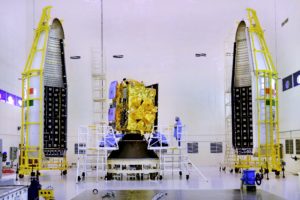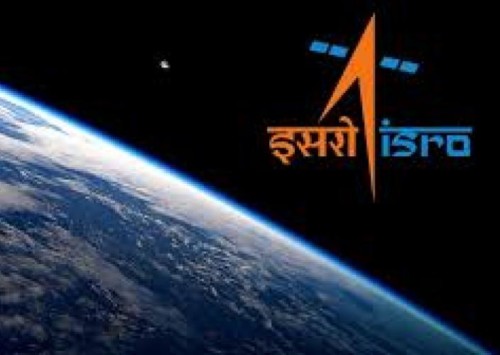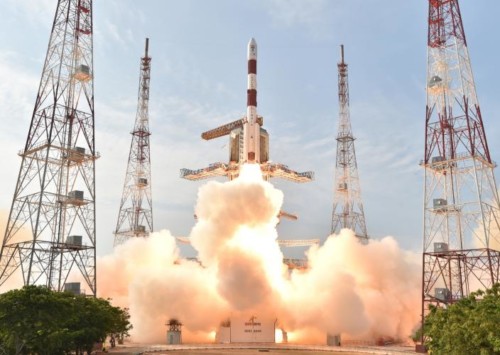Advanced weather satellite launched by ISRO
The INSAT-3DR, fourth in the category of meteorological satellites, was launched on September 8, 2016 by the Indian Space Research Organisation (ISRO); it is equipped with modern instruments to study weather patterns and to help in the surface-level search and rescue operations.
ISRO has launched its weather satellite INSAT-3DR using the GSLV F05 vehicle. The second launch pad of the Satish Dhawan Space Centre, ISRO’s leading rocket launch centre in Sriharikota in Andhra Pradesh, a south-eastern state, was the site of launch.
With a lift-off mass of 2,211 kgs the INSAT-3DR has 1,255 kilograms of propellant. The propellant is mainly required to raise the satellite from the Geosynchronous Transfer Orbit (GTO) to its final Geostationary Orbit and to maintain the satellite in its orbital slot during its life.
With an operational life of eight years, the INSAT-3DR is an advanced satellite configured with an imaging System and an Atmospheric Sounder.
This is the tenth flight of the Geosynchronous Satellite Launch Vehicle (GSLV F05) which has been designed to inject 2 to 2.5 ton class of satellites in geostationary orbits. In this mission, the indigenously developed Cryogenic Upper Stage is being carried on-board the launch vehicle for the fourth time and it is the first operational flight of the GSLV carrying the indigenous cryogenic engine (Cryogenic engines are special rocket engines that use liquid oxygen and liquid hydrogen as fuel). Its previous journeys were test flights including the GSLV-D5 and D6 missions in January 2014 and August 2015. With this launch, India’s own Cryogenic Upper Stage in the rocket is boosting from test phase to operational phase.
The INSAT-3DR will be used for operational Search and Rescue service provided by its predecessor INSAT-3D to various users, including Coast Guard, Airport Authority of India, Shipping and Defence Services. What makes it special is its imaging capabilities for night-time pictures.
A step up on its predecessors
The INSAT-3DR also belongs to the group of meteorological satellites operated by the ISRO. The category has KALPANA-1, INSAT-3A and INSAT-3D which have been operational in the geostationary orbit for the past one decade.
The Kaplana-1 which was earlier known as METSAT was renamed after the Indian born American astronaut Dr. Kalpana Chawla died on February 1, 2003 in the US Space Shuttle Columbia disaster. It was the first in the series of exclusive meteorological satellites built by the ISRO.
The INSAT-3A, a multipurpose satellite was launched on April 10, 2003 and it carried a three channel Very High Resolution Radiometer (VHRR) for meteorological observations. The INSAT-3D which was designed for enhanced meteorological observations was launched on July 26, 2013.
Like its predecessor, the INSAT-3DR carries a Data Relay Transponder as well as a Search and Rescue Transponder. Thus, it will provide service continuity to earlier meteorological missions of the ISRO and further augment the capability to provide various meteorological as well as search and rescue services.
Launch of the INSAT-3DR which was scheduled at 16:10hrs on Thursday was delayed by 40 minutes over issues related to filling up propellants for the cryogenic engine.
India had its eyes set on the launch as it was telecasted live on Doordarshan, the public broadcaster and also on ISRO’s official website.














